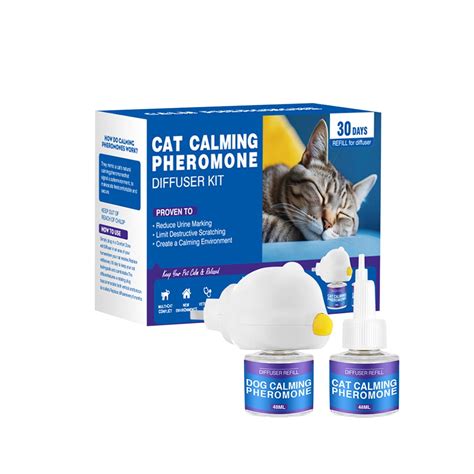Cats are known for being independent creatures, but they can also suffer from separation anxiety. This condition can cause a cat to experience stress, anxiety, and even physical symptoms when they are left alone. Separation anxiety is a common problem for cats, with an estimated 40% of cats experiencing some form of this condition.

What is Cat Separation Anxiety?
Separation anxiety is a condition that occurs when a cat experiences stress or anxiety when they are separated from their owner or another person or animal that they are bonded to. This can happen when the cat is left alone at home, when they are taken to a new place, or when they are separated from their owner for an extended period of time. Separation anxiety can cause a cat to experience a variety of symptoms, including:
- Meowing and crying
- Pacing and restlessness
- Destructive behavior
- Urinating or defecating outside the litter box
- Overgrooming
- Loss of appetite
- Weight loss
What Causes Cat Separation Anxiety?
There are a number of factors that can contribute to the development of separation anxiety in cats, including:
- Changes in the cat’s routine
- A new pet or person in the home
- Moving to a new home
- A change in the owner’s work schedule
- The death of a family member or another pet
How to Diagnose Cat Separation Anxiety
If you think your cat may be suffering from separation anxiety, it is important to take them to the vet to rule out any other medical conditions that may be causing their symptoms. Your vet will also be able to help you diagnose separation anxiety and recommend the best course of treatment.
How to Treat Cat Separation Anxiety
There are a number of different ways to treat separation anxiety in cats, including:
- Medication: Anti-anxiety medication can be helpful in reducing the symptoms of separation anxiety in cats. However, it is important to only use medication under the supervision of a veterinarian.
- Behavioral therapy: Behavioral therapy can help cats learn to cope with being left alone. This type of therapy can include teaching the cat to relax and to associate being alone with positive experiences.
- Diffusers: Diffusers release pheromones into the air that can help to calm and relax cats. Pheromones are natural chemicals that are produced by cats and other animals to communicate with each other.
-
Other solutions: There are a number of other things you can do to help your cat cope with separation anxiety, such as:
- Providing your cat with plenty of exercise and mental stimulation
- Creating a safe and comfortable place for your cat to retreat to
- Leaving your cat with a toy or treat when you leave
- Gradually increasing the amount of time you leave your cat alone
Diffusers for Cat Separation Anxiety
Diffusers are a popular way to help reduce the symptoms of separation anxiety in cats. Diffusers release pheromones into the air that can help to calm and relax cats. Pheromones are natural chemicals that are produced by cats and other animals to communicate with each other. There are a number of different types of diffusers available, including:
- Feliway diffusers: Feliway diffusers release a synthetic version of the feline facial pheromone, which is a pheromone that cats produce when they are feeling safe and secure. Feliway diffusers have been shown to be effective in reducing the symptoms of separation anxiety in cats.
- Adaptil diffusers: Adaptil diffusers release a synthetic version of the dog appeasing pheromone, which is a pheromone that dogs produce when they are feeling calm and relaxed. Adaptil diffusers have been shown to be effective in reducing the symptoms of separation anxiety in dogs, but they have not been specifically studied for use in cats.
Which Diffuser is Right for My Cat?
There are a number of different factors to consider when choosing a diffuser for your cat, including:
- The age of your cat: Feliway diffusers are safe for use with kittens and adult cats. Adaptil diffusers are only safe for use with puppies and adult dogs.
- The size of your home: The size of your home will determine how many diffusers you need. A single diffuser is typically sufficient for a small home, while a larger home may require two or more diffusers.
- The severity of your cat’s separation anxiety: If your cat has severe separation anxiety, you may need to use a combination of diffusers and other treatments.
How to Use a Diffuser for Cat Separation Anxiety
To use a diffuser for cat separation anxiety, simply plug the diffuser into an outlet and turn it on. The diffuser will release pheromones into the air for up to 30 days. You should place the diffuser in a central location in your home where your cat can easily access it.
Other Solutions for Cat Separation Anxiety
In addition to diffusers, there are a number of other things you can do to help your cat cope with separation anxiety. These include:
- Providing your cat with plenty of exercise and mental stimulation.
- Creating a safe and comfortable place for your cat to retreat to.
- Leaving your cat with a toy or treat when you leave.
- Gradually increasing the amount of time you leave your cat alone.
Conclusion
Cat separation anxiety is a common problem, but it can be managed with the right treatment. Diffusers are a safe and effective way to help reduce the symptoms of separation anxiety in cats. However, it is important to use a diffuser in conjunction with other treatments to ensure the best possible results.





















